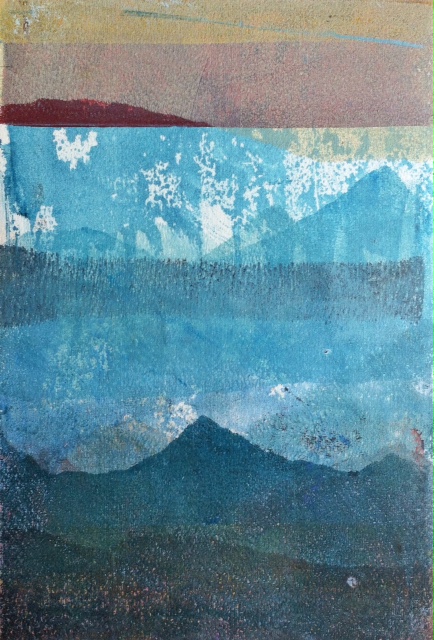 The purple figs in the alley were ripe last week, dropping all over the street and and I wondered why I hadn't noticed them sooner.
The purple figs in the alley were ripe last week, dropping all over the street and and I wondered why I hadn't noticed them sooner.
Why, when something is almost right in front of our eyes, don't we take notice? There are all kinds of answers, but I've been thinking about this one: What if we're just suffering from "habitual landscape," stuck in a fixed framework, unaware of the bigger picture?
I've been pondering a similar situation in my life: Summer. After moving to Davis, CA some years ago, I began to long for a way out of summer. The sun is hot and and the air is dry--the temperature can sit on us over 100 for days on end. Like today: forecast:101 degrees.
For one reason and another, our family rarely leaves the valley during these extreme months. Frustrated, I imagined vacations in Maine or British Columbia.
I realized I have a perennial problem: without a surplus of money and bonus time, how do I find acceptance for where I am? Like the preschoolers on a recent NPR report, I decided to opt for flexible, fluid thinking. I was struck by Michelle Trudeau, the author of the report's words:
Children try a variety of novel ideas and unusual strategies to get the gadget to go. For example, UC Berkeley psychologist, Alison Gopnik says, "If the child sees that a square block and a round block independently turn the music on, then they'll take a square and take a circle and put them both on the machine together to make it go, even though they never actually saw the experimenters do that."
This is flexible, fluid thinking — children exploring an unlikely hypothesis. Exploratory learning comes naturally to young children, says Gopnik. Adults, on the other hand, jump on the first, most obvious solution and doggedly stick to it, even if it's not working. That's inflexible, narrow thinking. "We think the moral of the study is that maybe children are better at solving problems when the solution is an unexpected one," says Gopnik. --Preschoolers Outsmart College Kids in Figuring out Gadgets
I decided to try and solve my problem by diving deeper into the very environment that frustrates me. Thus began my "Shift" series; a monoprint series using plants gathered within my immediate surroundings; first in my own back yard and then, broadening out to my neighborhood and beyond.
Initially, the process felt abstract and remote, but soon enough, I became an avid collector of the most common plant species in my neighborhood; what one gardener described as "top 40" plants. Top 40 or no, it didn't seem to matter. Their shapes made elegant tracings in the acrylic paint and their signatures on the paper made me want to stay in the studio and do more and more.
Soon, I had a collection of prints; postcards of my explorations, but I also noticed that my attitude had changed. I was no longer trapped in the heat of the Central Valley. Instead, I was released into my own ongoing exploration/vacation.
These days, I'm taking those prints and cutting them up, piecing together collage prints. It's still hot and I still spend only the early morning hours outdoors, but instead of Maine, the studio is now my refuge.














